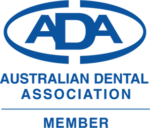Hairline Cracks in Teeth: Eating tough foods or engaging in strenuous activities can sometimes cause harm (such as a cracked tooth). This article provides information on the reasons, symptoms, and various therapies for repairing your smile.
Let’s get started!
What Is Hairline Cracks Tooth?
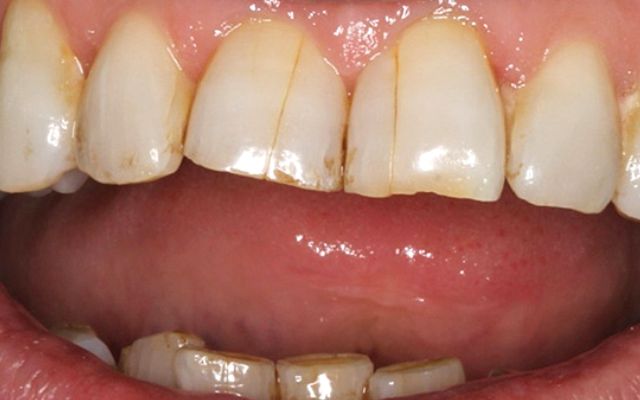
Hairline cracks, also called craze lines or cracked tooth syndrome (CTS), are tiny, thin cracks on a tooth’s surface. Craze lines may look like deep fractures, but they rarely penetrate the inner tooth and don’t need treatment. Ageing, regular wear, and bruxism cause craze lines.
Hairline cracks in teeth are minute cracks or fractures that form on the tooth enamel’s surface. They are frequently imperceptible to the naked eye and require specialist dental equipment such as magnifying lenses, dental explorers, and X-rays to be detected.
These fissures can be produced by a variety of circumstances, including dental damage, biting on hard objects, grinding or clenching the teeth, and even temperature fluctuations. With time, they can deepen and become more apparent, posing the risk of infection or tooth loss and other more serious dental issues.
6 Types of Hairline Fracture
Here are the 6 common types of hairline fractures:
Craze Lines
These are superficial cracks that affect only the outer layer of the tooth, known as the enamel. They are typically harmless and do not require treatment.
Fractured Cusp
This type of fracture occurs when a small piece of the tooth’s chewing surface breaks off. It often happens in teeth with large fillings. Dental restorations can usually repair this type of fracture.
Cracked Tooth
A cracked tooth extends vertically from the chewing surface towards the root. It can cause sensitivity to hot and cold temperatures and may lead to more severe complications if not addressed promptly. Treatment options include dental bonding, dental crowns, or root canal therapy.
Split Tooth
A split tooth occurs when a cracked tooth is left untreated, and the crack progresses further, causing the tooth to separate into two distinct segments. In most cases, the tooth cannot be saved entirely and requires extraction.
Vertical Root Fracture
This type of fracture starts at the root of the tooth and extends towards the chewing surface. Vertical root fractures can be challenging to diagnose as they may not present visible symptoms. Extraction is typically necessary for this type of fracture.
Avulsion
Avulsion refers to a complete displacement of the tooth from its socket due to trauma or injury. In this case, immediate dental attention is crucial to attempt re-implantation. However, if re-implantation is not possible, tooth replacement options such as dental implants or bridges may be considered.
Hairline Cracks Tooth Causes
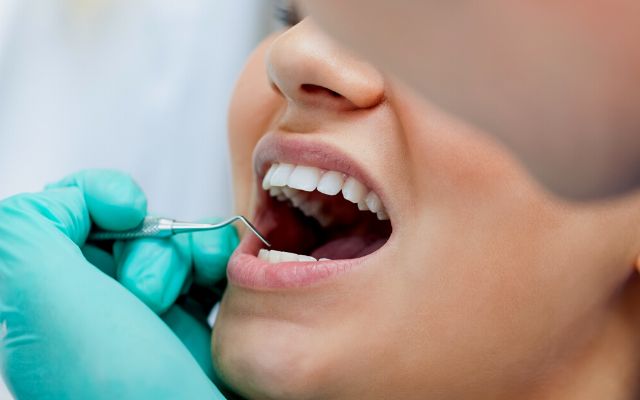
There are numerous probable explanations for tooth fractures. Among the most prevalent craze line, hairline cracks causes are:
Trauma
Direct trauma to the face or mouth, such as a sports injury, a fall, or a car accident, can cause a tooth to crack or fracture. Chewing on hard objects such as ice, hard candies, and popcorn kernels can cause a tooth to break or chip.
Cavity decay
Teeth compromised by decay or cavities are more susceptible to cracking, especially when subjected to force or pressure during chewing.
Huge fillings
Since fillings can weaken the tooth structure over time, teeth with big or aged fillings are more susceptible to fracture: front teeth, hairline crack, front tooth, root canal, tooth fractures.
Crushing or squeezing
Due to the repeated pressure and tension exerted on the teeth, individuals who grind or clench their teeth, a condition known as bruxism, can cause their teeth to crack or shatter.
Temperature Variations
Teeth can contract and expand in response to temperature fluctuations, such as when ingesting hot or cold meals and beverages, which can place stress on the tooth and lead to cracking over time.
Age
Teeth can become increasingly brittle and susceptible to breaking as people age, especially if they have experienced long-term dental issues such as tooth decay, periodontal disease, or teeth grinding.
If you feel you have a cracked tooth, you should see a dentist immediately, as timely treatment can avoid further damage or infection.
Some Symptoms of Hairline Cracks in Teeth

It can be difficult to detect hairline cracks in teeth, as they may not be visible to the human eye and may not cause obvious symptoms. If the crack deepens or spreads, it can cause a variety of symptoms, such as:
- Sensitivity: Particularly in the impacted tooth, you may suffer sensitivity to hot and cold meals and drinks. The severity of this sensitivity depends on the depth and location of the crack.
- Pain: When biting or chewing with the damaged tooth, you may suffer discomfort, especially if the break is deep or has reached the pulp.
- Discomfort: When the tooth is subjected to pressure, such as during eating or drinking, you may experience discomfort or pain. In some instances, a cracked tooth may result in swelling or inflammation of the gums.
- Variations in tooth color: A tooth fracture can occasionally result in discoloration or darkening of the afflicted tooth.
If you have any of these symptoms, you should visit a dentist immediately for an evaluation. Treatment as soon as possible can prevent future tooth damage and the need for more extensive dental procedures.
Are Hairline Cracks in Teeth dangerous?
If left untreated, microscopic fissures in teeth can be hazardous. Little hairline cracks may not cause immediate symptoms or necessitate treatment, but they can deepen and grow over time, causing more severe dental issues.
If the break develops deeply into the tooth, the pulp, which includes nerves and blood vessels, may be exposed. This can cause discomfort, sensitivity, and if the damage is severe, root canal therapy or even extraction.
In addition, microscopic fissures can allow germs to enter the tooth, potentially resulting in infection and inflammation of the pulp or surrounding gum tissue.
So when you feel you have a cracked tooth, it is crucial that you seek dental care as soon as possible. Early management can avert the need for more severe treatment or tooth loss by preventing further tooth damage.
In addition, regular dental examinations and cleanings can help detect any early signs of tooth damage or decay before they develop into more significant issues.
How to Treat Hairline Cracks in Teeth?
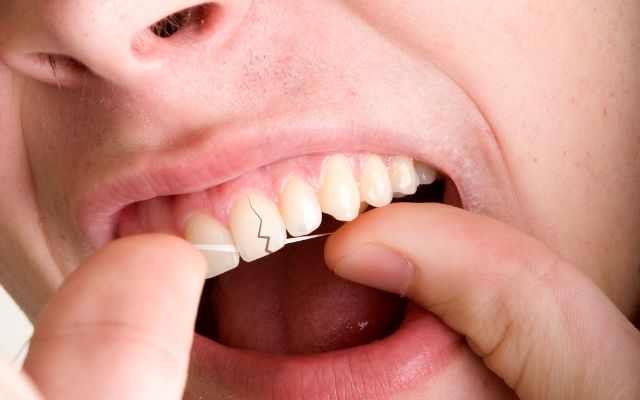
The therapy for hairline cracks in teeth is determined by the crack’s degree, location, and etiology. Typical therapeutic options include:
Dental Bonding
If the fracture is small and superficial, your dentist may be able to fill it with tooth-colored resin to restore the tooth’s appearance and prevent it from becoming deeper.
Tooth Crowns
For significant cracks that have damaged the tooth’s structure, a dental crown may be necessary to give additional support and safeguard the tooth from future harm.
Root Canal Treatment
If the crack has penetrated deeply into the tooth and exposed the pulp, root canal therapy may be required to remove the injured pulp and restore the function and appearance of the tooth.
Extraction
In some instances, a broken tooth may be irreparable and must be pulled. This is usually a last choice, as your dentist will always attempt to save the tooth if possible.
Mouthguard
If the crack is the result of bruxism (teeth grinding or clenching), your dentist may recommend a custom-fitted mouthguard to avoid future tooth damage.
If you feel you have a cracked tooth, it is crucial to get dental care immediately. Early management can avert the need for more severe treatment or tooth loss by preventing further tooth damage.
In addition, regular dental examinations and cleanings can help detect any early signs of tooth damage or decay before they develop into more significant issues.
Hair Line Cracks Treatment In Bassendean
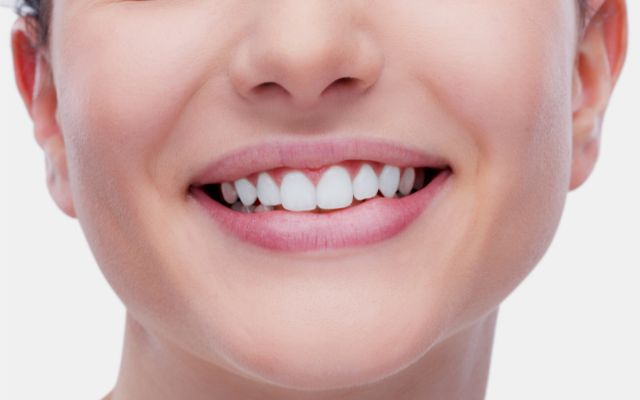
In conclusion, hairline cracks in teeth can be caused by various factors, including trauma, cavities, grinding or clenching, temperature changes, and aging.
Timely treatment is crucial to prevent further damage or tooth loss. Treatment options include dental bonding, crowns, root canal therapy, and extraction in severe cases. It depends on the degree, location, and etiology of the crack.
It is also important to visit a dentist regularly for check-ups and cleanings to detect any early signs of tooth damage or decay.
Therefore, if you suspect that you have a cracked tooth, seek dental care as soon as possible to avoid further damage or infection. Let’s contact our Bassendean dentist for our expertise in dental care and treatment.
FAQs
How can tiny fractures in teeth form?
There are numerous causes of hairline cracks, including biting on hard objects, tooth decay, dental trauma, teeth grinding or clenching, and exposure to severe temperatures.
How can I detect if my tooth has a hairline fracture?
Hairline fractures may not be visible to the human eye, making them difficult to identify. Yet, some symptoms to be aware of include sensitivity to hot or cold foods and beverages, pain while biting or chewing, discomfort or pain when the tooth is exposed to pressure, swelling, and color changes in the tooth.
What happens if a tooth with a hairline fracture is not treated?
A hairline crack in a tooth can potentially deepen and expand, leading to more significant dental issues such as discomfort, sensitivity, infection, inflammation of the pulp or surrounding gum tissue, or even tooth loss, if left untreated.
Are hairline cracks in teeth normal?
Yes, hairline cracks in teeth are normal and can occur due to aging, wear, and tear, or bruxism. Craze lines are also known as and usually don’t require treatment unless they cause pain or sensitivity.
What are signs of hairline cracks?
Signs of hairline cracks in teeth include sensitivity to extreme temperatures, such as hot or cold foods and drinks, and an erratic toothache when biting or chewing certain foods. Sporadic tooth pain without signs of decay or a hole at the tooth surface may also indicate a possible crack, as well as a small swelling on the gum line that may signify an infection. If you experience any of these signs, schedule an appointment with your dentist as soon as possible.




